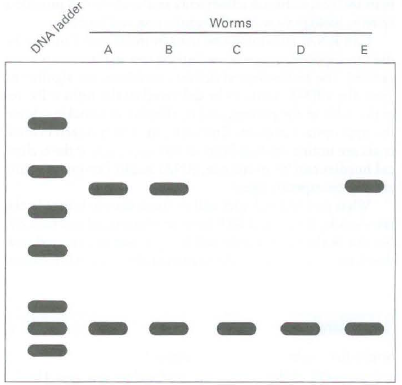The nematode worm C. elegans is amenable as a model for siRNA studies. In this experiment, adult
Question:

a. Of the embryos examined, which samples show that the adults successfully took up bacteria containing the double-stranded unc18 RNA? What made you come to those conclusions?
b. Label which set of bands is the result of the amplification by the unc18 primers and which by the GLUT4 primers. Why was RT-PCR with GLUT4 primers used as the positive control? What does this tell you about the relationship between the knock down of the unc18 and GLUT4 mRNAs?
c. With antibodies against unc18, draw a representative Western blot showing the expected results from protein samples from each of these five samples.
d. To further investigate the relationship between the unc18 and GLUT4 proteins, the siRNA experiment is repeated, but in embryonic cells expressing a GFP-tagged GLUT4 protein. Draw a cell including its mitochondria, nucleus, and rough endoplasmic reticulum and show where, if using a laser scanning confocal microscope, the GFP fluorescence would localize in the cells expressing the unc18 siRNAs. Do not forget to draw the cell representing the control.
e. The ability of a protein to colocalize with another protein suggests but does not prove that the two physically interact with each other. Having each protein labeled, in this case unc18 to green fluorescent protein and GLUT4 to red fluorescent protein, provides the experimenter with reagents to tease apart the question of colocalizatton versus interaction. Using these reagents, describe one technique that would simply demonstrate uncl8 colocalizes with GLUT4 and another technique that proves the two proteins interact physically.
Step by Step Answer:

Molecular Cell Biology
ISBN: 978-1429234139
7th edition
Authors: Harvey Lodish, Arnold Berk, Chris A. Kaiser, Monty Krieger, Anthony Bretscher, Hidde Ploegh, Angelika Amon, Matthew P. Scott





